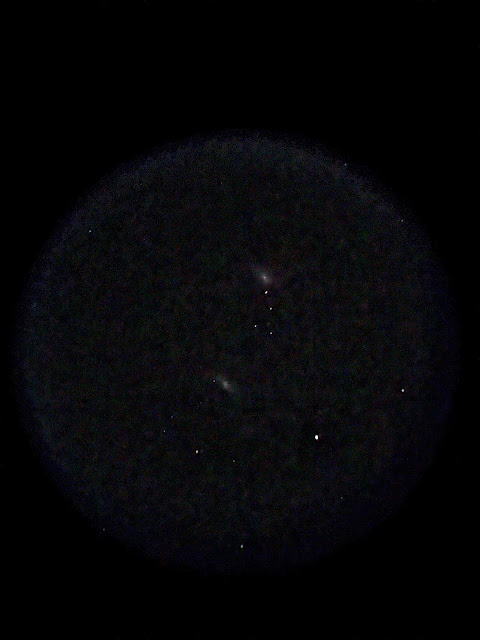 |
| Astrolabe with a minor customization: a new nut with a nylon insert. |
This summer I'll be starting my 4th year of recreational Astronomy. Even if the aforementioned move doesn't go as scheduled, I feel a change in the works for my new passion. For a long time most of my viewing sessions have been of the "point-and-look" variety. There have been many awe-inspiring sights. But I'm finding that my equipment and Bortle scale location limit the limitless.
" My part of Tucson is a Bortle 5 with minimal local lighting (unless the neighbors are cooking out). I have an 8" Dobsonian F6. My two main EPs are a 32 and a 9mm with a 2x Barlow. While I am able to view things as dim as M1, "bright nebula" such as NGC 281 seem to be out of my reach. Ditto with items like the Rosette (I see the cluster but zero nebulosity). "Turn Left at Orion" often mentions the use of a filter, but I am loathe to drop the money on another one since my experience with them has been fruitless."
When I posted the above paragraph to an astronomy group, the common denominator in most of their answers pointed to darker skies. "Your best filter is a tank of gas" said one response. My trips to Oracle take things down to a 3. There's an even darker area about two hours southeast of here. I guess it will depend on how bad I want it.
********************
 |
| Always gorgeous, the Orion Nebula |
I think I started last year deciding on using observation programs to help me plan sessions better. I did the Lunar 100, then after joining the RASC, I looked into some of their programs. But I never finished my Lunar 100 and the programs listed with RASC didn't spark my interest much. For one thing, many programs include binocular sightings and my tremors don't allow me to steady binoculars.
Still others called for sketching, which I have touched on here. My sketching goes better from pictures I took rather than sketching at the scope. So my interest there has waned somewhat.
Some great advice came from someone responding to my original post:
My perspective is to do as much as you can with what you have, then consider moving up.
I did a large part of my Astronomical League Master Observer Program with an 8". When I started doing the Herschel 400 I decided it was time--I purchased a 12". My skies changed from Bortle 3 to 4 while living here in my corner of Wisconsin.
The next biggest help to seeing more was spending a lot of time at the telescope. The more you observe the more you see--experience tells you what to look for, and the brain-eye coordination improves. The eyes even adjust for night vision more rapidly.
I'd say to do what you can with what you have for now...and enjoy the journey.
********************
After bringing everything in, I noticed my primary mirror was also fogged up. I took a blow dryer to most everything in my tote. The mirror cleared up on its own. So note to self, a telescope is just a big black tin can subject to the whims of nature.
********************
 |
| Two galaxies in the Virgo Super Cluster |
So harkening to the title of this post, if we have guests I can find most of the celestial "tourist stops". The Orion Nebula, Bode and Cigar Galaxies, Hercules Cluster, M31 in Andromeda, et al. Also the moon and planets are a good draw for the uninitiated. Unless someone is then hooked into Astronomy, it won't be long before we head back in for a beer.
For me, I have my seasonal Messier list - in which winter is almost complete. There are also clusters and multiple star systems listed in my "Left at Orion" book. There are lots of items that, while they don't light up the eyepiece like M34, they are no less interesting now and just as rewarding.

Comments
Post a Comment